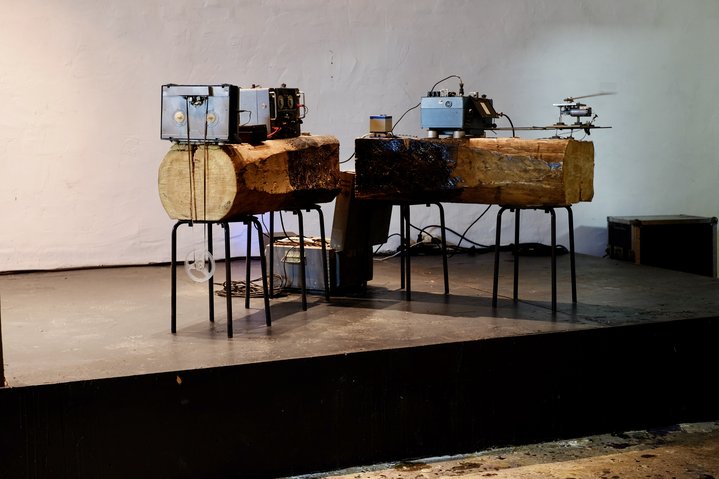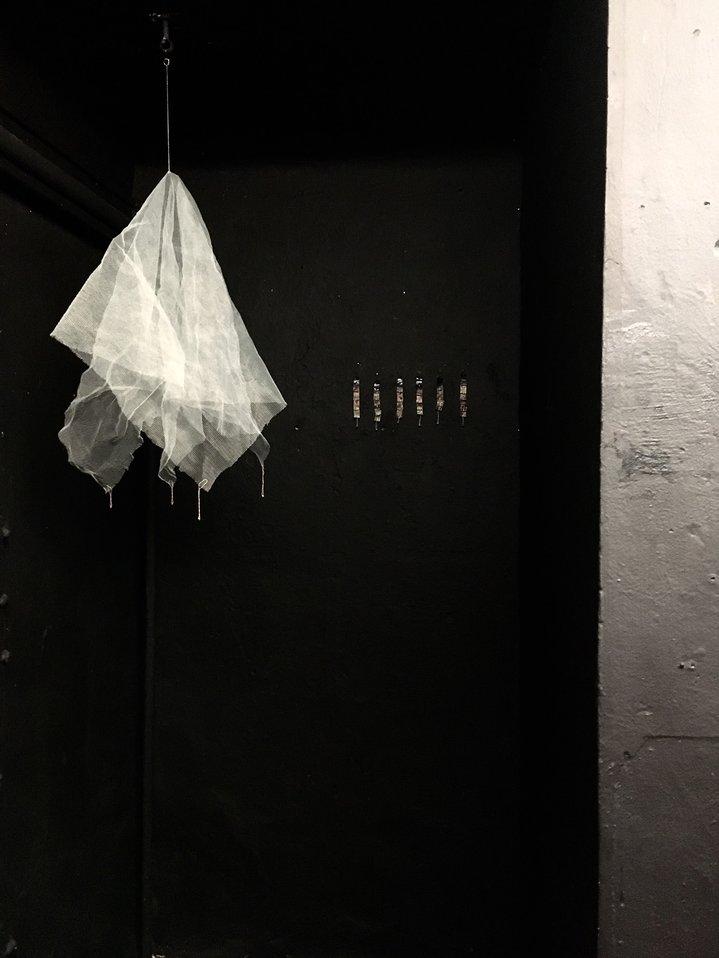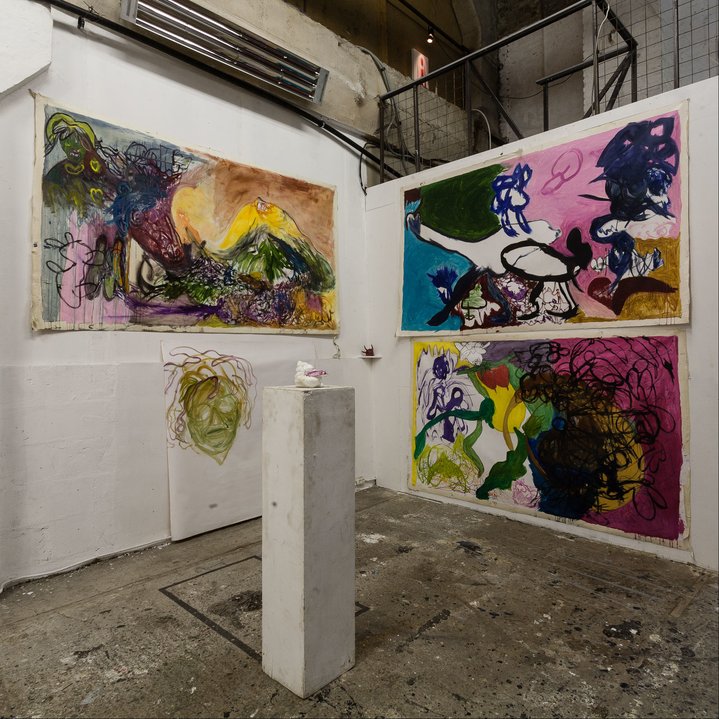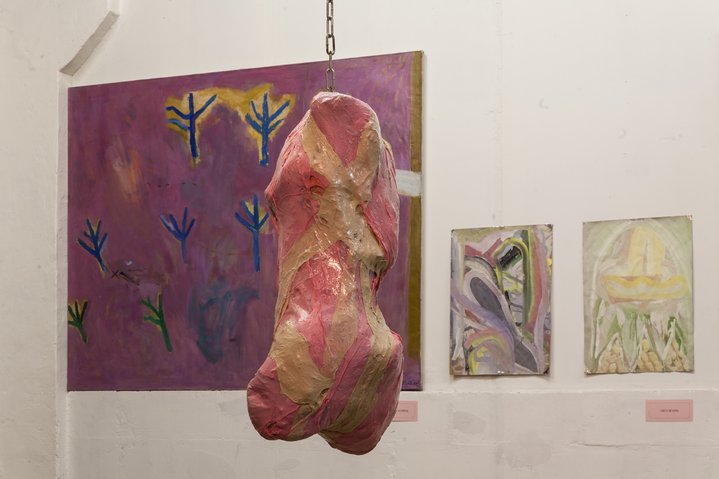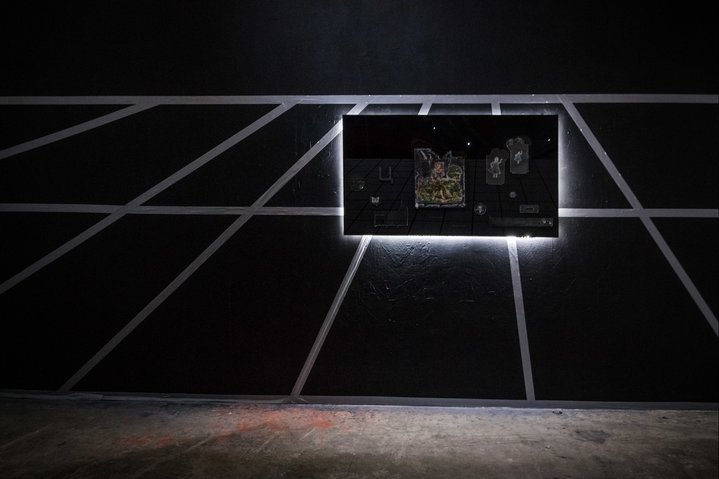Work by Roman Tugai. ‘New Unknown’ exhibiton at Luda gallery, 2019. Photo Mikhail Grigoriev
A creative city’s true lifeblood
St. Petersburg is host to a number of informal, alternative and experimental art spaces that complement the city’s museums and galleries.
For many, art in St. Petersburg means the usual giants, the State Hermitage, the State Russian Museum and the Manege Exhibition Hall. While these institutions underlie St. Petersburg’s cultural life, the real test of a city’s vibrancy is whether or not it can sustain a healthy alternative scene, where both established and up-and-coming artists can collaborate and test their boundaries.
All of these spaces, of course, had to put all their events on hold for the duration of the coronavirus pandemic. However, they are resilient and started planning their comeback months ago. Here are the most compelling independent galleries and spaces to visit the next time you’re in St. Petersburg.
FFTN
Expansive white rooms have become a cliche in the gallery world, but they come to a grinding halt in St. Petersburg’s FFTN space, a stone’s throw away from the Vosstaniya Square. Its name comes from the word ‘Fifteen’, which is approximately the number of people who can fit into that gallery’s five square metres of space.
Curated by artists Ilya Grishaeva (b. 1984) and Irina Aksenova (b. 1985), FFTN hosts regular exhibitions, often once or twice a month. Emerging artists and performers from the city’s underground scene mingle in an informal atmosphere that feels as accessible as an exclusive gathering of 15 people can be.
Kunsthalle Nummer Sieben
German for “Art showroom number seven”, the Kunsthalle Nummer Sieben doubles as both an exhibition space and a base of operations for the art collective Sever-7 (“North-7”). Located in an expansive basement network on Petrogradsky Island, the space resembles a bunker turned into an East Berlin art space. The collective strives to maintain an informal atmosphere, welcoming artists whose works may never hang inside a fancy museum.
Sever-7 organizes a variety of different projects, with a major focus on sound and video art that veers towards the conceptual and the experimental. The Kunsthalle is open on Sundays and by appointment on all other days.
Luda Gallery
The Luda gallery can be found just off the city’s main thoroughfare, Nevsky Prospect. It is a space that mixes the White Box gallery style with a slightly grungier aesthetic. Curated by artists Peter Belyi (b. 1971) and Veronika Nikiforova (1997), the space strives to be a meeting point between local and foreign artists.
This is the Luda Gallery’s third incarnation. The first was an informal garage space from 2009 to 2010, the second a larger gallery on Mokhovaya Street from 2014 to 2017, while the third edition opened in 2019 near Alexander Nevsky Square. While the pandemic has put Luda’s comeback on hold, recent exhibitions on cyberart, empty space and deconstruction suggest the themes it will return to in the near future.
Rosa's House of Culture
Home to the internationally renowned ‘Chto Delat’ collective, Rosa’s House of Culture is more than just an exhibition space: it’s a hotbed of social activism and activity. It is named after Rosa Luxemburg, a Polish-German socialist who helped inspire many of the collective's ideals and principles.
Located inside Petrogradsky Island’s famous Red Banner factory, the space host’s Chto Delat’s School of Engaged Art, a horizontally-structured educational experience that allows for young artists to work together as a collective, while studying the ins and outs of post-Soviet art and culture.
Different social projects share the same roof as the school, such as queer tango evenings, Marxist reading groups and a public library dedicated to both contemporary art and activist literature.
Egorka Gallery
While many artists, curators or spaces boast about exploring the boundaries between public and private space, the Egorka Gallery outdoes most by basing itself in the communal flat shared by Anna Tereshkina and Anastasiya Makarenko, the gallery’s two curators.
Unlike other galleries on this list, Egorka only serves as a gallery periodically, sometimes without any prior warning. Unsuspecting friends coming to visit may thus find themselves part of an art event.
Tereshkina and Makarenko mount the art on the walls of two large rooms and a long hallway, and they don’t charge admission to their low-scale exhibitions. They do, however, take donations in the form of tea, soap, buckwheat or toilet paper.
Frants Gallery Space
The Frants Gallery Space, is curated by multimedia artist Anna Frants (b. 1965), whose first gallery space under that name was opened in New York City in 1998. Its aim at the time was to serve as an overseas platform for the Leningrad/St. Petersburg underground of the late Soviet and contemporary periods. In 2007, she opened a Russian branch in the heart of St. Petersburg’s historical centre.
While exhibitions of the late Soviet underground continue to play a major role, the gallery has in recent years become more involved in Frants’ CYLAND project, which seeks to explore the fusion of art and technology, as well as the frontiers of new media.
Intimate Space
Another apartment gallery space, although one that positions itself along more radical lines, Intimate Space operates in a zone where the personal is political and strives to make inclusivity more than just a catchphrase.
In its mission statement, the gallery calls for more spaces that show “raw” work. In this case the meaning of “raw” is “honest”, not “underdeveloped”. This means creating a space where people feel safe being vulnerable, a space free of sexism, homophobia, ageism, speciesism and all other forms of discrimination.
The gallery’s exhibitions are periodical and can be mixed in with performances that double as activism or even advocacy. Some exhibitions are openly advertised, others are meant solely for the artist and their close friends.
FFTN
Rosa’s House of Culture
Kunsthalle Nummer Sieben
Gallery Luda
Egorka gallery
Anna Frants gallery
Intimnoe Mesto






